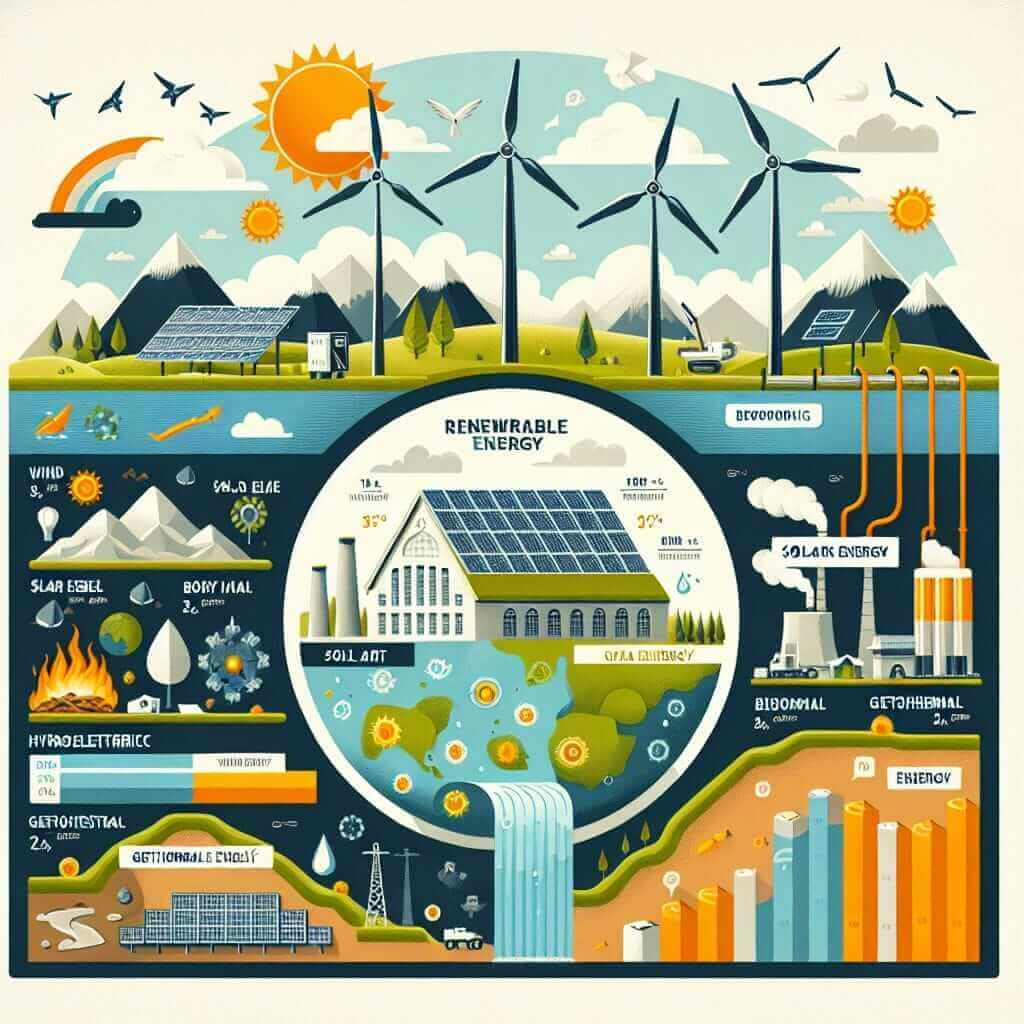The IELTS Reading section assesses a variety of skills, including reading for detail, understanding the main ideas, detecting inferences, and recognizing the writer’s opinions. One crucial aspect of topical preparation involves understanding how specific sectors, such as the renewable energy industry, are addressing pressing global issues like carbon footprint reduction. Given the increasing significance of renewable energy in the global discourse on sustainability, this subject has a high probability of appearing in future IELTS Reading tests.
Topics related to the environment have been popular in the past IELTS exams, and considering the growing importance of renewable energy, this subject is likely to remain relevant. Analyzing this trend can help candidates prepare better and improve their reading skills.
Reading Passage: A Practice Test
Renewable Energy and Carbon Footprint
As the global community becomes increasingly concerned about climate change, the focus on reducing carbon footprints has intensified. The renewable energy industry plays a crucial role in this context. “Carbon footprint” refers to the total amount of greenhouse gases, especially carbon dioxide, that are emitted directly or indirectly by human activities. The renewable energy industry addresses carbon footprints in various ways:
-
Wind Energy: Wind power generates electricity using turbines. Unlike fossil fuels, it does not emit carbon dioxide during operation. By replacing coal or gas-fired power plants, wind energy significantly reduces overall carbon emissions.
-
Solar Energy: Solar panels convert sunlight into electricity without any direct emissions. Large-scale solar farms can replace conventional power plants, thus cutting down on carbon dioxide emissions.
-
Hydropower: By leveraging water flow to generate electricity, hydropower provides a renewable energy source with minimal carbon footprint. However, it should be noted that large dams can have ecological impacts.
-
Biomass Energy: Biomass involves using organic materials like plant and animal waste to generate energy. It is considered carbon-neutral since the carbon dioxide released during combustion is offset by the carbon dioxide absorbed by plants during their growth.
-
Geothermal Energy: This method taps into the Earth’s internal heat to generate electricity or provide heating. It has a low carbon footprint, especially when used in regions with significant geothermal activity.
Despite these initiatives, the renewable energy industry also faces challenges. Manufacturing and installing renewable energy systems can have a carbon footprint, although it is considerably lower than fossil fuel-based systems. Continuous innovation and improvements in technology are essential to minimize these emissions further.

Practice Questions
Multiple Choice
-
According to the passage, which renewable energy source is described as carbon-neutral?
- A) Wind Energy
- B) Solar Energy
- C) Biomass Energy
- D) Geothermal Energy
-
Which of the following is NOT mentioned as having a direct role in reducing carbon footprint?
- A) Wind Energy
- B) Solar Energy
- C) Nuclear Energy
- D) Hydropower
True/False/Not Given
- Wind energy produces some carbon dioxide during its operation.
- Large-scale solar farms can completely eliminate the need for fossil fuels.
Matching Information
-
Match the renewable energy sources with their specific attributes:
-
Wind Energy
-
Solar Energy
-
Hydropower
-
Biomass Energy
-
i) Uses organic materials like plant and animal waste.
-
ii) Converts sunlight into electricity.
-
iii) Generates electricity using water flow.
-
iv) Generates electricity using turbines.
-
Answer Keys
- C) Biomass Energy
- C) Nuclear Energy
- False – Wind energy does not produce carbon dioxide during its operation.
- Not Given – The passage does not state that solar farms can completely eliminate the need for fossil fuels.
Matching Information
- Wind Energy -> iv) Generates electricity using turbines.
- Solar Energy -> ii) Converts sunlight into electricity.
- Hydropower -> iii) Generates electricity using water flow.
- Biomass Energy -> i) Uses organic materials like plant and animal waste.Common Mistakes
- Misinterpreting information: Ensure you read the passage carefully and understand the exact role of each renewable energy source.
- Neglecting keywords: Keywords can significantly aid in locating necessary information in passages.
Vocabulary
- Carbon Footprint (n) /ˈkɑː.bən ˈfʊt.prɪnt/: The total amount of greenhouse gases emitted by an individual, organization, event, or product.
- Biomass (n) /ˈbaɪ.oʊ.mæs/: Organic material that comes from plants and animals, and it is a renewable source of energy.
Grammar Point
Relative Clauses
Relative clauses provide additional information about something without starting another sentence. For example: “Wind power generates electricity using turbines which do not emit carbon dioxide during operation.”
Conclusion
For a great score in the IELTS Reading section, immerse yourself in diverse topics, practice rigorously, and familiarize yourself with various question types. Remember, understanding the implications of global issues like the carbon footprint of renewable energy can be both exam-relevant and intellectually rewarding. Happy studying!